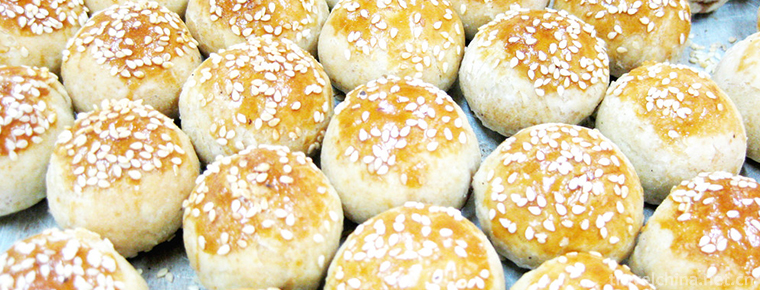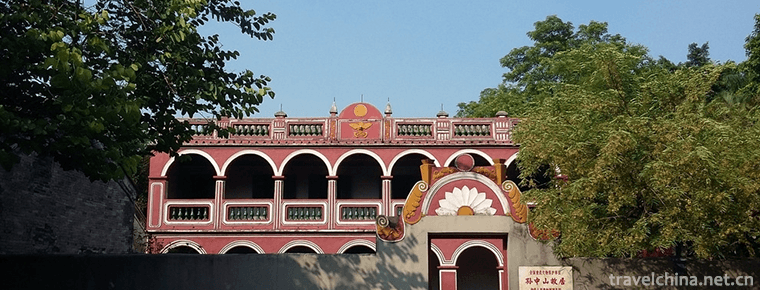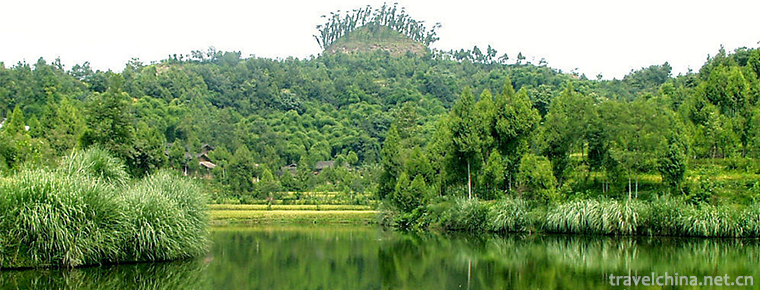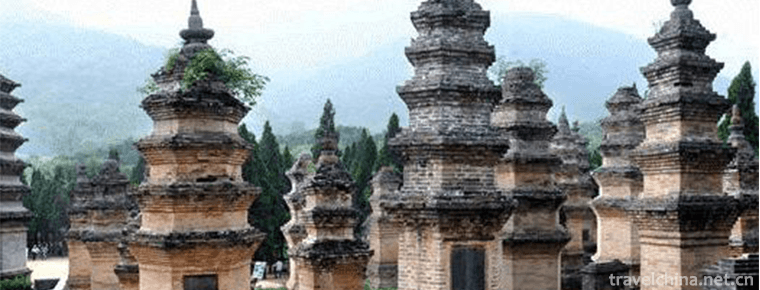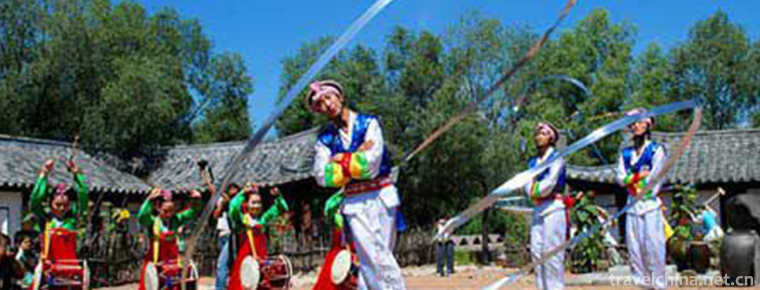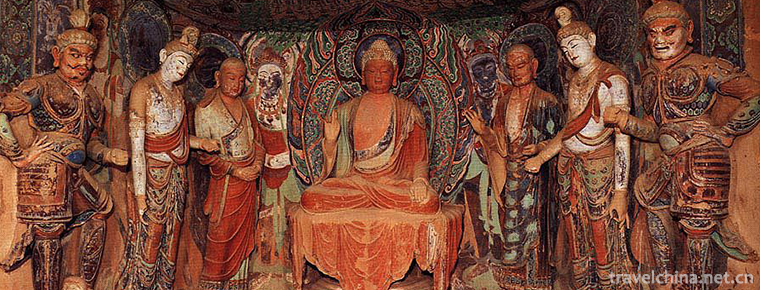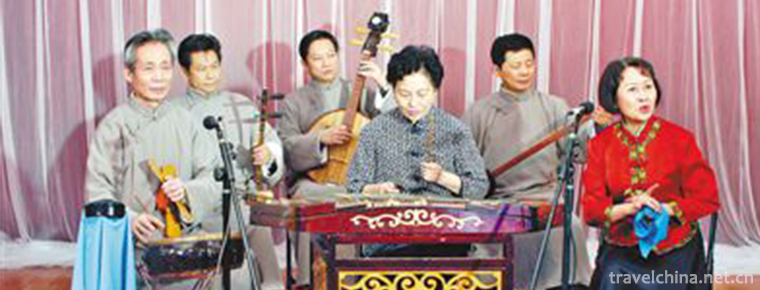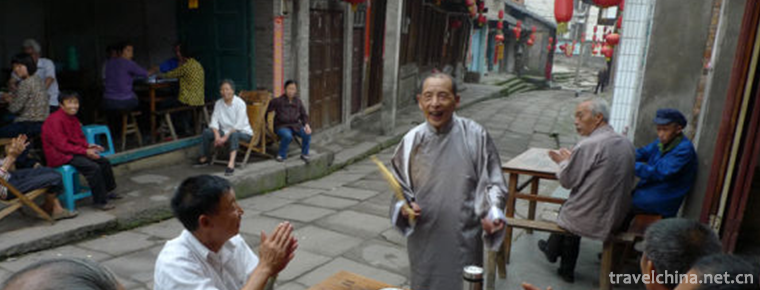World Park
The World Park is located in Dabaotai, Huaxiang, Fengtai District, Beijing. It is 16 kilometers from the city center and 8 kilometers from Beijing West Railway Station. It is a national 4A-level scenic spot and Beijing boutique park. It features open-air and open-air performances, zero-distance interactive participation and exotic singing and dancing performances. In 2014, it was designated as the theme park performing area of Beijing Cultural and Creative Industry Functional Zone by Beijing Municipal Government.
Beijing World Park opened in 1993, covering an area of 800 Mu and 76% of the greening area. It consists of open-air art theatre, Asia-Pacific grand stage, African small stage, Welcome Square in the gate area, Elephant Hall in Thai village, and Wuzhou Flower Car grand parade performance. It is composed of six performances, embellishing nearly 100 world-famous architectural landscapes. As far as possible, the building materials of scenic spots imitate the original materials, using copper carving, copper casting, gold, gold plating, wood carving, etc., to maintain the original style.
With the help of new coordinate positioning, Beijing World Park has changed from static miniature landscape to dynamic performing arts. It has launched a dynamic performance base of "Glamorous World-Global Folk Song and Dance Gallery", with original foreign folk song and dance performances as the highlight, gardening and gardening as the green new landscape, and architectural attractions as the basis.
With the launch of the "one belt and one way" summit in Beijing, the Beijing World Park has launched a large-scale historical dance drama, such as "Silk Road style", "Silk Road Song" (flower Car Parade) and "Kroraina ancient rhyme". All the performances in the park are free to watch.
Development history
In April 1991, Jiang Zemin, Li Peng and other party and state leaders visited the park site to plant trees and examined the sand table model of the park .
In April 1992, construction was officially started by breaking ground.
On September 25, 1993, President Jiang Zemin wrote the name of the garden in person and officially opened it to visitors on October 25. Vice Premier Qian Qichen, accompanied by Luo Gan and Li Qiyan, cut ribbons for the official opening of the World Park. Li Peng wrote the inscription for the World Park: "The park is big, the world is small, the scenic spots, have a full view" . Leading comrades Wanli, Tian Jiyun, Li Lanqing, Wei Jianxing, Liu Huaqing, Wu Xueqian and Hu Jintao visited the park one after another.
On the morning of September 21, 1995, a large-scale opening ceremony and folk March performance of "95 Asian Folklore Week" (one of the main activities of "Chinese Folklore Tour" were held in Beijing World Park. From September 21 to September 27, various folk art performances and handicraft production were held in Beijing World Park. The opening ceremony was grandly held in the World Park . Art troupes from Indonesia, Japan, Thailand, Singapore, Korea, Nepal, the Philippines, China and Hawaii from 11 countries and regions staged performances of songs and dances with rich national customs.
In 1996, the Russian Vladivostok Children's Art Troupe visited the World Park and performed classical and modern ballet in an open-air theater. Beijing Fengtai District Committee and District Government held a large-scale cultural evening celebrating "August 1" in the park. The World Park Art Troupe performed with Tianhua, Wang Kun, Liu Shuping, Zhang Shugui and other famous artists. From September 1st to 7th, the World Park launched a "future of love frontier" campaign to console outstanding teachers in Ali Tibet, inviting five outstanding primary school teachers in Ali Tibet.
In 1997, the Elephant Pavilion of the World Park was officially opened. Tourists can see Thai elephant performances in the World Park .
In 2000, on the basis of the original elephant training performance, more than 20 crocodiles from Thailand and Thai elephant trainers jointly performed wonderful performances for tourists. In October, he hosted the dragon dance competition of the Yanhuang Dragon Boat Dragon and Lion World Competition.
In 2001, the Fourth Beijing International Tourism and Culture Festival (Fengtai District) was held in the World Park. Actors from Italy, Britain, France, Mongolia, Greece and Vanuatu gave performances.
In 2002, the 5th Asian Art Festival with the theme of "Know Asia and Love Asia" was held here. Art troupes from Nepal, Malaysia, Bangladesh and Singapore performed foreign national songs and dances.
In 2003, the World Park hosted the "Century Travel of Chinese and Foreign Automobiles" Festival. From October 18 to 28, a 12-day automobile exhibition was held in Beijing World Park .
In 2004, the 4th Fengtai Branch Event of "Meeting Beijing" sponsored by the Ministry of Culture was held in the Art Theatre. The Karmal Folk Art Map, Bahamas Youth Dance Map and Fengtai Youth Palace Dance Troupe performed programs with national and regional characteristics. The National Hip-hop Competition was held at the Art Theatre of the World Park in Beijing. The 3rd National New Star Selection Show Competition and the 1st National Popular Singers Competition (Beijing Competition Area) finals of the Beiguang Daily Cup were held in the World Park.
In 2005, the 2nd "Double Star Cup" National TV Hip-hop Dance Competition was held in the Park Art Theatre, Beijing Sub-Competition Area and the 2nd Beijing Hip-hop Dance Competition . In October, the park opened the Golden Week with the theme of "Dynamic Africa". Actors from Ethiopia's Mutabe Black Band, Australia's "Grenda" Little Star Dance Troupe and Ukraine were invited to participate in the performance.
In 2006, the first Asian Spring Festival Folklore Tour was held in the World Park . In July, the closing ceremony of Beijing International Wind Festival was held in World Park. Nearly 30 excellent orchestras from 10 countries and more than 1000 people from home and abroad participated in the activities. In the same month, the World Park opened the Jamaican Cultural Week under the Eiffel Tower.
On August 3, 2008, in order to welcome the Chinese traditional festival Qixi Festival, Beijing World Park opened a "Chinese traditional culture experience area". More than 30 Chinese costume enthusiasts and nearly 100 visitors took part in Chinese traditional Qixi Festival activities such as "Douqiao". On September 14, Chinese young men and Russian girls arranged folk legends such as "Chang'e Running to the Moon", "Hou Yi Shooting Day" and "Wu Gang Giving Wine" into sitcoms in the World Park, and staged the "Western version" Mid-Autumn Festival story .
On July 15, 2009, Beijing World Park held an elephant Water-Splashing Festival in Thailand with the theme of "Cool World, Cool Summer". Thai elephants, actors from Uganda, Russia, Thailand, Wa and Dai nationalities participated in the festival.
On June 24, 2011, the interior decoration of the miniature landscape Guili Palace was completed, including tatami, Japanese screen, wooden door and other Japanese-style structures. The original Guili Palace was miniaturized in 1:2 ratio. Except for the size difference, the interior structure of the building is basically the same .
From April 2 to 4, 2012, in order to coordinate the activities of the Sino-Russian Cultural Tourism Year, a national song and dance performance with strong Russian flavor was performed in the open-air grand stage theatre. At the same time, a folk indigenous performing troupe from Uganda will present original ecological folk songs and dances .
From April 15 to the end of October 2017, the World Park held a grand tour of flower carts around the world. More than 100 Chinese and foreign actors dressed in colorful costumes formed eight parades. Foreign actors from Uganda, Ukraine, Russia, Cuba, Mexico, Armenia and other countries displayed the original exotic culture in front of tourists at zero distance .
Tourism information
Admission ticket
Off-season opening time: 8:00 a.m. - 16:30 p.m. (November 1 - April 14);
Opening time of peak season: 8:00 a.m. - 17:00 p.m. (April 15 - October 31).
Ticket: 100 yuan
Favoured policy:
Children: 1.2m or less free (accompanied by legal adults)
Student: 60 yuan (student ID is required, only for students below undergraduate level)
Persons with disabilities: free of charge (with a second-generation disability certificate and accompanied by legal adults)
traffic
Bus route: Metro Line 9, Fangshan City Railway, directly to Dabaotai Station.
Self-driving: 3 km south of Kefeng Bridge, Fourth Ring Road, Southwest China








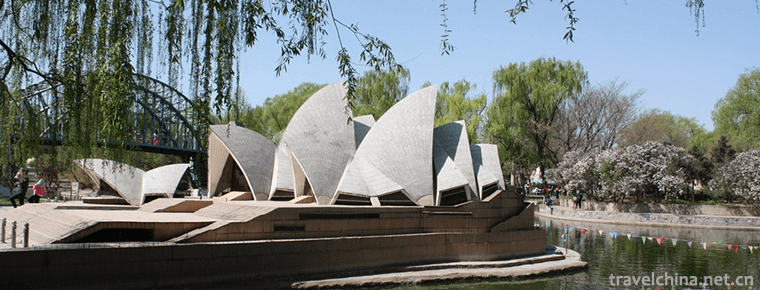
-
Chess cake
Chess cake is a special product of Tangshan District in Hebei Province. It is named for its shape like a small drum and a chess piece.
Views: 169 Time 2018-11-27 -
Sun Zhongshans hometown
Sun Yat-sen's hometown is located in Cuiheng Village, Zhongshan City, Guangdong Province. It is surrounded by mountains on three sides: south, north and west, East by the Pearl River Estuary.
Views: 157 Time 2018-12-12 -
Hometown of Zhu De
Zhude Hometown Scenic Spot: National AAAAA Tourist Scenic Spot, National Key Cultural Relics Protection Units, National Patriotic Education Demonstration Base, National Anti-corruption Education Base,.
Views: 267 Time 2018-12-12 -
Historic Architectural Complex in Heaven and Earth
Historic buildings in Tiandi, World Cultural Heritage, National Key Cultural Relics Protection Units and National AAAAA Tourist Scenic Spots are located in the hinterland and surrounding.
Views: 261 Time 2019-02-21 -
Korean Agricultural Music and Dance
"Agricultural Music and Dance" is commonly known as "Agricultural Music", which is spread in the Korean community of Jilin Province, Heilongjiang Province, Liaoning Province .
Views: 147 Time 2019-04-16 -
Huizhou three carving
The three carvings in Huizhou are a kind of local traditional carving art. They refer to three kinds of local traditional carving crafts, i.e. wood carving, stone carving and brick carving, .
Views: 144 Time 2019-05-04 -
Lanzhou Taiping Drum
Lanzhou Taiping Drum, a traditional dance in Lanzhou City, Gansu Province, is one of the national intangible cultural heritage..
Views: 254 Time 2019-05-10 -
Clay sculpture
Clay sculpture, commonly known as "color sculpture" clay sculpture art, is an ancient and common folk art in Chinese folk tradition. That is to say, a kind of folk handicraft made of clay mo.
Views: 139 Time 2019-06-07 -
Sichuan Yangqin
Sichuan Yangqin is one of the representative folk songs of Sichuan Province, which is popular in Chengdu, Chongqing, Luzhou, Zigong and other cities and regions. In the early period, it was also calle.
Views: 182 Time 2019-06-16 -
Folk Stories of Zouma Town
Folk stories of Zouma Town, Jiulongpo District, Chongqing City, are spread in Zouma Town. The exact age of its origin can not be verified. However, the Zouma Town was established in the late Ming and .
Views: 495 Time 2019-08-16 -
Wawu mountain
Wawu Mountain National Forest Park is under the administration of Hongya County, Meishan City, along the western edge of Sichuan Basin. It is 180 km away from Chengdu and covers an area of 1.05 million mu. .
Views: 291 Time 2020-10-15 -
Introduction to Panzhihua
Panzhihua, a prefecture level city of Sichuan Province, is located in the southernmost end of Sichuan Province, 614 km away from Chengdu in the north, 273 km from Kunming in the South and Lijiang and Dali in the West; it is located in the central and southern section of Panxi Rift .
Views: 331 Time 2020-12-14
